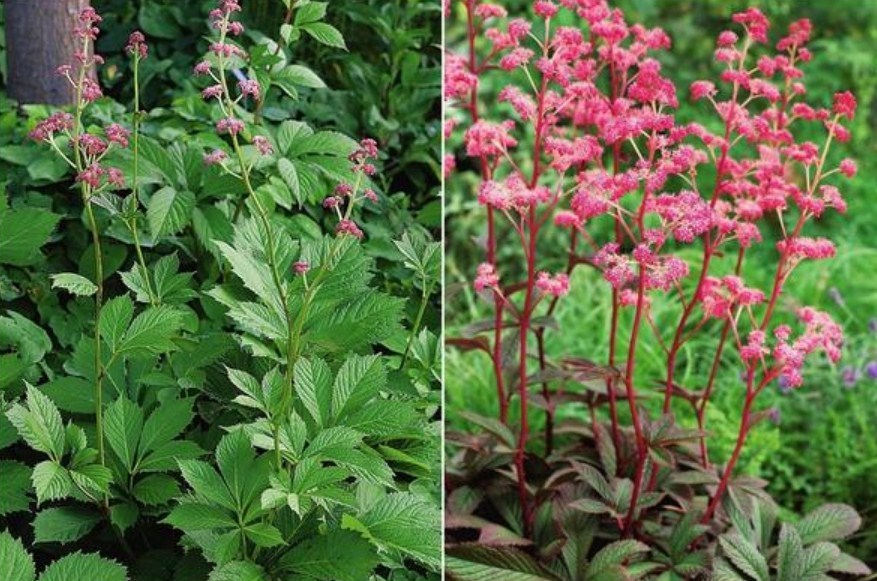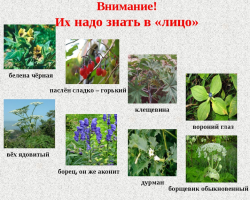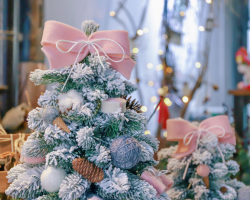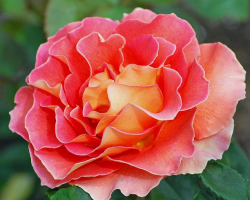If desired, even the most gloomy corners of the garden can be turned into an attractive summer flower garden. Properly selected compositions of shade -tolerant flowers will delight their owners for several years.
Content
The quality of the shadow for individual varieties may vary. If one color is comfortable on the north side of the site, then others retain flowering longer with a partial or lace shadow. In an ideal version, the planted crops should replace each other's flowering, delivering aesthetic pleasure.
Shadow flowers for the garden perennial flowering
Plants growing in a thick shadow are more often distinguished not by abundant flowering, but by the texture of the leaves. When planting summer shadowy colors, it is important to consider the humidity of the soil and the properties of a number of growing shrubs and trees.
- Host -a long -term decorative plant with short -term flowering in the second half of summer. On a high leg, lilac bells gathering in clusters bloom. The foliage of hosts is of greatest interest. Extended wrinkled leaves combine shades of green, white, blue and formed in a magnificent thick hat. The plant retains its colors until the first frosts.

- Shade -tolerant flowers Comfortably grow in any corners of the garden, including under the trees. In contact with the sun's sun, the host changes its color. Green varieties brighten, blue leaves turn green. So what khosta loves shadow or sun? Resistance to sunlight is determined by the variety of plants. The absence of direct sunlight helps to preserve the juiciness of the leaves. The perfect location is near reservoirs among dense vegetation.
- Rogersia is a shade -tolerant Perennial plant with large foliage. High shoots perfectly decorate the shady garden. The leaf plates in their shape resemble the leaves of chestnut or elderberry.

- Flowering falls at the beginning of June and lasts 3-4 weeks. Small flowers are painted in light delicate colors and emit a pleasant aroma. After flowering, the leaves grow with renewed vigor and acquire new interesting colors. Tall summer flowers love a shadowTherefore, it is better to plant them along fences or buildings.
- Primrose -perennial stunted flowers that grow perfectly in the shade of tall plants. The length of the peduncle reaches no more than 20 cm in height. The coloring of colors is the most diverse. In some varieties, flowers are collected in inflorescences, in others are located in a single version.

- The primrose in open ground takes root better in late spring, and is already beginning to please with a beautiful bright flowering. With proper care, the plant blooms repeatedly in the middle of summer and retains the flowers until the end of August.
- Smilacina -perennial plant for shady moisturized corners of the garden. The first flowering begins in the middle of spring and lasts until mid -summer. Small white flowers from afar resemble fluffy panicles that do not wither, but grow into red berries.

- The decorative plant is densely dotted with large leaves that grow rapidly and create their own unique design.
- Iris Siberian -perennial plant with a large number of varieties. Large -shaped peduncles, with a bizarre shape and blurry watercolor color. Bright yellow, blue, white flowers will become a bright decoration of the darkened garden at the beginning of the summer season. The flower petals are located in 2 tiers and are found both in one color scheme and in different ones.

- An unpretentious plant propagates by rhizomes and feels comfortably on any plot of land. Dense green leaves continue to perform a decorative function and after flowering. Shade -tolerant flowers They feel comfortable on the sunny side.
- The irises take root well both in autumn and in the spring. Burned rhizomes must be sprinkled with soil before frosts.
- Vasilisnik - a shade -to -be unpretentious plant For the garden, blooms at the very beginning of summer. Small flowers are collected in thick inflorescences, so that the effect of lush flowering is created. In a favorable environment, a basilisma blooms for more than a month and makes a rich aroma. It is better to combine a plant with a small amount of lace foliage with other decorative crops.

- Vasilizniki varieties propagate using the cutting of the bush or dividing into several parts. A perennial plant will delight the eye for many years with sufficient amounts of moisture in the summer season. Vasilisnik quickly dries in the drought.
On a note: Any universal shade -tolerant flowers should not grow in a thick shade for a long period. Therefore, it is recommended to transplant flowers at least once every 3 years.
- Garden geranium -an unpretentious long -term flower flower. Shadow -bearingthe plant quickly grows into a lush bush and loves a lot of light. Geranium loves a shadow or sun? Summer flowers are planted in a shadow so that the sun does not destroy the flowers.

- Universal garden geranium perfectly complements any flower beds. Large inflorescences have many shades. Gardeners often use a plant for the background - shade -tolerant flowers are planted on empty areas between shrubs. Propagating garden geraniums is best divided into bushes. A hardy plant is quickly accepted and does not require special care.
- Denter -molum -loving summer flower that loves shadow. The variegated heart -shaped flowers are located in a row on a long arrow. The older the plant, the more abundant and powerful flowering.

- The dicenser blooms at the end of May and pleases the eye of the entire summer season. Planting in the shade Promotes the growth of the bush and longer flowering. The dicenship propagates by dividing the bush. Does not need an annual transplant, maintaining its properties for 5-6 years.
- Bruner -perennial flowering plant reaches half a meter in height. Small blue inflorescences resemble forget -me -nots. Shade -tolerant flowers effectively grow in the form of thickets. In forest areas are found in wet shaded areas.

- At a comfortable temperature, Bruner can be bloomed in the fall. Propagate the flower through the rhizome. Before wintering, colorful sheets are cut off.
- Water bribe - Perennial herb with white, raspberry, purple flowers. The five -line drooping bells are surrounded by spurs, so among the people they are often called as boots or bells.

- Shadow summer flowers Bloom from May to June. After flowering, the plant decorates the garden of openwork foliage collected in the outlet. With regular watering, flowers can be transplanted into partial shade.
On a note: Most shade -tolerant flowers require timely moisture and fertilizer feeding.
- Stirproof -unpretentious shade -tolerant flowers with small blue flowers. Abundant flowering creates the effect of carpet coating and is ideal for filling the voids in areas. The height of the stem is not more than 30 cm.
- The forget -me -not grows well in the shade of trees and shrubs. To extend the life of the plant, you must not forget to moisturize the soil. Flowering begins in the spring and ends in late July.

- Badan -summer flowers with dense large leaves, which gardeners are often compared with elephant ears. The low -growing perennials grow perfectly in rocky soil and in the shade of forest plants. The care of the plant is to remove the rotten foliage, which remains to winter and at the first frost acquires a crimson color.

- Badan flowers are small bells that are collected on a thick leg. Summer shade -tolerant flowersit is better not to disturb frequent transfers. The surface root system must be watered and protected from drying out in time.
- Barvinok - an evergreen, unpretentious plant, which is tightly creeping on the ground. The leaves of the winding shrub resemble narrow glossy plates. Every year flowers cover a new meter of land. To limit its distribution, but leave a beautiful flowering - plant a flower in a beautiful garden pot.

- Active flowering of the barvinka begins in the spring and continues all summer. Between the leaves, blue, lilac, pink or white five -petal flowers are woven.
Perennial shade -tolerant flowers for openwork shadow
- Geichera -ideal shade -tolerant flowers for the lazy garden . Caramel and bright salutic shades of foliage are complemented by marble drawings with silver spraying. From spring to autumn, the color of the leaves changes three times.

- Perennial the flower loves shadow and sun. Heikher pleases with plentiful flowering of white and pink bells. The flower is used for landscape design of rocky sections of the garden.
- Tiarell- A low -year perennial plant is ideal for the shady corners of the garden. Small delicate inflorescences are placed in the form of spikelets.

- Unpretentious summer flowers love a shadow And quickly grow in any conditions. They are a worthy alternative to ordinary grass to fill the lawn. Tiarell is propagated by dividing the bushes every 3-4 years or a self-sowing.
On a note: When combining several varieties of colors, it is important to observe the sequence of their growth. Low -growing flowers are planted in the front row to the light. High flowers in the foreground create a too thick shadow.
- Astilba - An attractive flower with abundant prolonged flowering. An interesting shape of the leaves retains the decorativeness of the plant without flowers. Small inflorescences are collected in thick compositions and shimmer red, pink and white shades.

- Various varieties of astilbe bloom at the beginning, in the middle and at the end of summer, which allows you to admire beautiful colors throughout the season. The height of the plant ranges from 30 cm to 1.5 meters.
- Shade -tolerant flowers Lose brightness when direct sunlight hits. Adult plants are frost -resistant. It is advisable to cover young seedlings for the winter.
- Begonia -an eternally flowering plant complements flowers that love a shadow. Bright shades of flowers are beautifully full of suspended pots, in flower beds and beds. It grows in small compact bushes, so a beautiful picture requires group landing.

- Begonia shadow -bearing And a frost -resistant plant. Favorable conditions for it are a wet environment and rich soil, a temperature above 20 degrees. In the summer, the flower needs frequent watering. The plant propagates by dividing the bush or rhizome.

- Lobelia - annual flowers that develop well in the lace shadow. Low bushes grow in the shape of a ball. Slowing pots with lobelia allows you to form a rounded weightless composition. Flowering white, purple and blue flowers It begins from the end of spring and lasts until the fall.

- In September, boxes with seeds ripen at the site of flowers. Hotel varieties of lobelia propagate only with cuttings.
- Nasturtium– unpretentious summer flowers growing in the form of stunted bushes. Lush thick foliage has a rounded shape. Single flowers are painted with warm shades of yellow and red. Shadow -bearing summer flowers You can not place in the full shadow, since you can not wait for flowering. With a lack of light, the stems of the plants are very stretched and the shrub loses its attractiveness.

Shade -tolerant annual flowers
- Alissum -an annual unpretentious plant with plentiful colorful flowering. Low -growing shade -tolerant flowers have a bright, pronounced aroma and are honey plants.

- Small inflorescences throughout the summer replace a friend, which actively attract insects. Thick hats of flowers perfectly cover the bare areas of the soil. They grow alissum through seedlings and with sowing.
- Cleoma -unusual summer flowers that love a shadow. The plant has a powerful root system and reaches 1.5 meters in height. The brushes of inflorescences reach 20 cm in diameter and resemble a web. Most often, white and bright pink is found.

- Flowering lasts from the beginning of summer until September. Not all gardeners like the unusual smell, but perfectly scares off pests. Cleom can only be grown using seeds that ripen in mid -autumn.
- Winged tobacco - Shadow -bearing annual flowers with a stable enchanting aroma. Small five -line flowers have a wide variety of shades. A tall plant feels comfortably in the darkened areas of the garden.

- Growing tobacco in partial shade extends flowering and retains colorful shades. To create a flowering carpet, summer flowers are planted under deciduous trees.
On a note: Flowers planted in the shade of trees need constant moisture and top dressing. Otherwise, they compensate for the lack of nutrients due to growing rhizomes .
- Petunia- Low summer plant with large variegated flowers. The delicate structure of the bells burns from direct sunlight, so the lace shadow will be the perfect place for an unpretentious plant.


- Beautiful summer flowers Decorate areas until late autumn. They are planted along the curbs or in decorative vases. Petunia require frequent irrigation. The plant is easily propagated with seeds.
- Saxifrage - unpretentious trellicous plant for the garden. Blooms in July and finishes in early autumn. There are flowers of pink, light red and white shades.

- Shade -tolerant flowers They grow no more than 30 cm in height, but at the same time perfectly revive the darkened area. Seedlings root in the soil no earlier than the beginning of June. Unpretentious plants grow well in dry soil and do not tolerate stagnation of water.
- Calcelaria -annual shadow flowers,which give abundant flowering on fertilized and humid land. The unusual shape of the flowers resembles stuffy shoes, To admire which you can at the end of spring - early summer.

- The summer plant quickly loses its decorativeness, so it is recommended to plant new sockets annually. Calcelaria - summer flowers that love a shadow and humidity. In dry weather, the plant will quickly wither.
- Mimulus - annual flowers loving shadowand keeping flowering all summer. A low -haired plant is planted along the curbs. Colorful flowering continues until late autumn.

- The shape of the flower resembles elongated bells with twisted petals at the end. The folk name of flowers is gubatic. Coloring color is diluted with stripes and strokes. Mimulus tolerates drought well and propagates by self -sowing.
Spectacular summer shade -tolerant flowers for partial shade
- Day-lily- Spectacular plants with large aromatic flowers. Abundant flowering directly depends on lighting, but in nature it grows in a partial shadow. The duration of flowering is no more than one month.

- How to understand lilenik loves shadow or sun? The perfect placement for a flowering flower bed is partial shade. Bright colors burn out in the sun, so dark shades should definitely be placed in the shade. Lileniki look spectacular in a thick landing separately from other floral arrangements . Summer flowers You can plant under vineyards and fruit trees.
- Pansies - The annual is more often found in sunlight. To extend the flowering of a summer plant, it is better to choose a site with partial shade. Shade -tolerant flowers for garden will be smaller in size, but will not lose their colors.

- Anyutins propagate the eyes with a vegetative way or wait until the flowers are sown on their own. Plants bloom throughout the summer and are very reminiscent of home violets.
On a note: A garden plot with partial shade should be lit by the sun at least 3 hours a day that falls out in the morning or evening.
- Dolphinium -summer flower with high peduncles of colorful shades. The plant is planted both in the shade and in the sun. What is the dolphinium loves a shadow or sun?

- With a strong sun, the petals burn out, which reduces the flowering period. The best place for planting the dolphinium will be a side where contact with sunlight falls on the first half of the day. The first flowering falls on June-July. With proper pruning, the plant re -throws the flowers.
- Balzamine -an unpretentious summer plant with prolonged flowering. On fleshy stems there are dense green leaves of pointed shape. Large flowers are placed from below-up on a vertical arrow. There are red, lilac, white.

- Balsam does not tolerate direct sunlight and frost. He feels comfortable in partial shade. In the southern states of America, the plant blooms all year round. Inside the flower contains a fruit-box with seeds, which are easily extracted in contact.

- Astra - Perennial summer flowers that love a shadow, the sun and partial shade are the same. An unpretentious plant blooms in any soil and, with sufficient quantities, forms powerful bushes.

- Due to its versatility, apostility is actively used by designers for landscaping sites. Monial -color inflorescences are preserved throughout the summer and retain the appearance for a long time after cutting.
- Floxes- Dwarf perennial flowers that love parties. Abundant flowering of dense inflorescences falls in the middle of summer. Flowers of bush phlox are painted in bright juicy colors and emit pleasant fragrance. Among the popular colors are red, white and purple. When sunlight hits, flowers burn with their colors.

- Summer phloxes tolerate the transplant even during flowering and quickly multiply through the division of the bushes. With a lack of moisture, the leaves turn yellow quickly, and the flowers are smaller.
- Cosmea -unpretentious herbaceous plant with a lot of greens. Flowers in the form of daisies are painted in rainbow pink-white colors. Terry varieties are painted in burgundy and yellow.

- After flowering, densely planted shoots of cosmes resemble a fluffy carpet. Separately planted flowers are stretched to 1.5 m in height. Blooming cosmea It tolerates cold well, grows equally both in the shade and in the sun. Party is ideal for a given plant.
- Viskari - summer flowers for partial shade. A low plant has an underdeveloped foliage, which during flowering is completely closed flowers with delicate shades of pink and blue.

- A trained plant is often used to decorate arbors and balconies. The flowering period is two months. Unpretentious whiskar does not require additional top dressing, but needs regular watering.
We advise you to read interesting articles about colors:
- What flowers to plant along the fence
- What plants, flowers, trees and shrubs bloom in early spring until the leaves open
- The most beautiful flowers of the world
- What unpretentious flowers to plant on the balcony on the southern and north side?
- What flowers are better to plant on the balcony in summer, winter?







